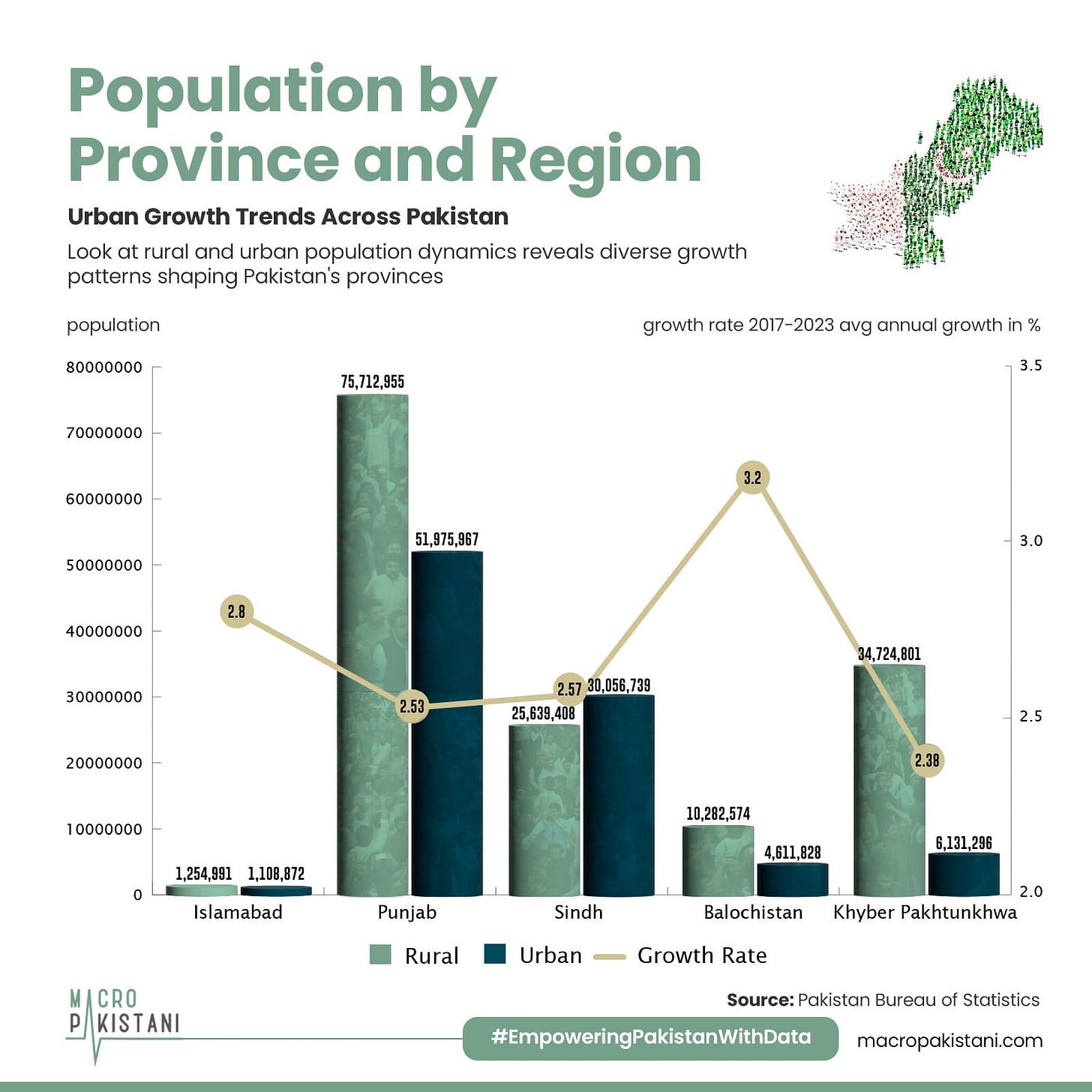Population Growth and Urbanization In Pakistan
Pakistan's rising population and accelerating urbanization call for urgent action to ensure a sustainable future.

The recent Census of 2023 reveals alarming trends in Pakistan’s population growth, highlighting an increase in the annual exponential growth rate from 2.40% during the 1998-2017 intercensal period to 2.55% in 2023. If sustained, this rate could lead to Pakistan's population soaring by more than 83%, from the current 241.5 million to over 441 million by 2047. Such rapid growth would impose immense pressure on food supplies, infrastructure, and essential services, exacerbating resource scarcity. With Balochistan at 3.2% and Islamabad at 2.8% leading in population growth rates, even the relatively lower rates in Punjab at 2.53% and Sindh at 2.57% remain higher than historical averages. This situation raises critical questions about the country's capacity to balance population growth with sustainable development.
What policy measures can be implemented to manage this demographic challenge effectively?
Adding to this complex demographic landscape is the rapid urbanization observed between 2017 and 2023. The urban population growth rate has risen to 3.67%, driving a significant increase in urban dwellers. The national level of urbanization has reached 38.8%, up from 36.4% in 2017. This trend highlights the increasing number of rural-to-urban migrants, estimated at over 6 million during this period, indicating the declining capacity of rural economies to sustain their populations. Consequently, the rural population growth rate has dropped to 1.88% compared to 2.05% in the earlier period. The shift underscores the urgent need to revitalize rural economies and address urban infrastructure challenges.
A provincial analysis reveals varied urbanization rates. Balochistan and Punjab have experienced the most rapid urbanization, with annual growth rates of 5.19% and 4.24%, respectively. Sindh’s urbanization rate stands at 3.24%, while Khyber-Pakhtunkhwa shows an unexpected decline in urban growth at only 0.72%. Sindh continues to be the most urbanized province, with nearly 54% of its population living in urban areas.
These trends reflect the diverse dynamics across provinces, requiring tailored strategies to manage urban growth sustainability while mitigating the challenges of rural depopulation.
GRAPHIC
Israel has demolished more than 600 buildings to establish a so-called buffer zone in the area known as the Netzarim Corridor, which has been under military occupation since November of last year.
The Israeli government's failure to clarify its intentions for Gaza has contributed to the first visible signs of a seemingly permanent military presence, aligning with ongoing calls for colonial resettlement in Gaza and suggesting an effort to ethnically cleanse Palestinians from the region.
Approximately 8 million people in Pakistan, mainly in rural Punjab, face functional limitations or disabilities, as assessed by the Pakistan Social and Living Standards Measurement Survey (2019-20) through criteria such as seeing, hearing, walking, speaking, concentrating, and self-care.
Disability inclusion is more than a moral imperative—it’s a strategic advantage for businesses and societies alike. With 1 in 6 people globally living with a disability, organizations have a unique opportunity to foster innovation, improve teamwork, and enhance workplace culture by ensuring accessible recruitment, training, and infrastructure.
Macro Pakistanis who read this newsletter can directly give us feedback via Substack chat:
Data Visualization & Marketing Partner: Brand Nib
Visit: https://macropakistani.com/advertise/
Grateful for the ever-growing list of collaborators!
About Us: Macro Pakistani is a data-driven research platform that aims to provide a basic understanding of Pakistan’s economy. If you have an interest in contemporary news but are currently overburdened with sensationalism and specialized vocabulary, we are the platform for you.
How are we doing? Please send us any questions, comments or suggestions by replying to this email.






